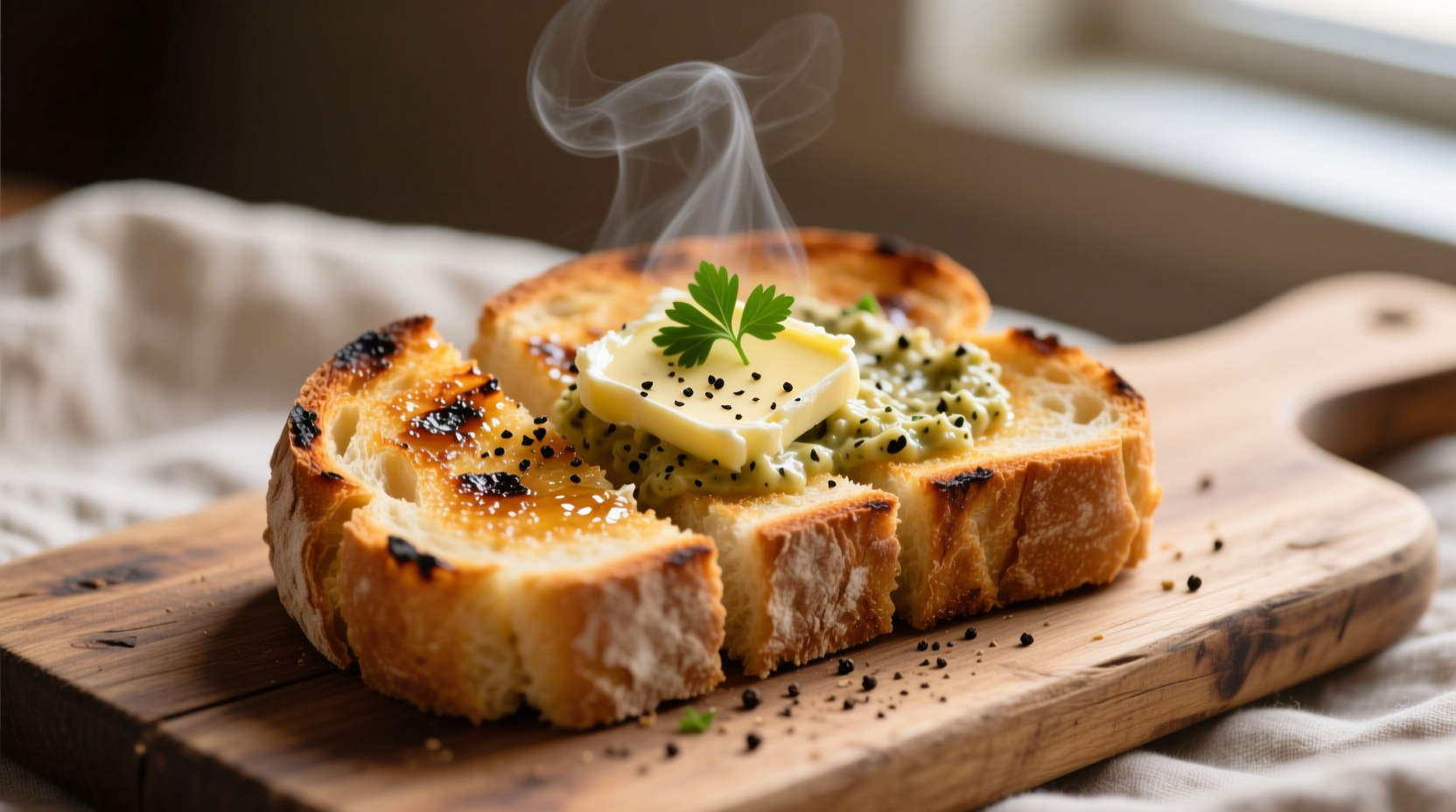Roasted garlic toast transforms simple bread into a gourmet delight through the magical caramelization of garlic. Unlike raw garlic preparations, roasting mellows garlic's sharpness while developing complex sweet, nutty flavors that spread like butter. This guide delivers chef-tested techniques for perfect roasted garlic toast every time, including optimal roasting temperatures, bread selection criteria, and professional presentation tips that elevate this humble dish from basic snack to restaurant-quality experience.
The Magic of Roasted Garlic: More Than Just Toast
While garlic bread often gets dismissed as a simple appetizer, roasted garlic toast represents a culinary technique with centuries of refinement. The key difference lies in the garlic preparation: roasting whole heads of garlic transforms pungent cloves into sweet, spreadable delicacies through the Maillard reaction and caramelization. This chemical transformation, documented in On Food and Cooking by Harold McGee, converts harsh sulfur compounds into milder, more complex flavor molecules.
Why Roasting Beats Raw Every Time
Raw garlic contains allicin, the compound responsible for its sharp bite and potential digestive discomfort. When roasted properly, allicin breaks down into diallyl disulfide and other compounds that deliver richer, more nuanced flavors without the harsh aftertaste. Food science research from the University of California Davis confirms that roasting garlic at 400°F (204°C) for 30-40 minutes reduces allicin content by over 90% while developing over 30 new flavor compounds.
| Characteristic | Raw Garlic | Roasted Garlic |
|---|---|---|
| Primary Flavor Compound | Allicin (sharp, pungent) | Diallyl disulfide (sweet, nutty) |
| Digestive Impact | Can cause discomfort | Gentler on stomach |
| Spreadability | Granular, difficult to spread | Creamy, butter-like consistency |
| Flavor Complexity | Single-dimensional | Multiple layered notes |
Selecting Your Foundation: Bread Matters More Than You Think
The perfect canvas for roasted garlic requires careful bread selection. Artisan breads with open crumb structure and substantial crust provide the ideal balance of chew and crunch. According to the Bread Bakers Guild of America, sourdough varieties offer optimal pH balance that complements roasted garlic's sweetness without overwhelming it. Avoid pre-sliced commercial breads with high sugar content, as they caramelize too quickly and create bitter notes when toasted.
Step-by-Step: Crafting Perfect Roasted Garlic Toast
Preparing the Garlic
- Choose plump, firm garlic heads with tight skins
- Cut ¼ inch from the top to expose cloves
- Drizzle with 1 tsp olive oil per head, ensuring oil penetrates between cloves
- Wrap tightly in foil with optional flavor enhancers (rosemary sprig, lemon zest)
- Roast at 400°F (204°C) for 35-40 minutes until cloves press easily
Perfecting the Toast
- Select ½-inch thick slices from day-old bread (fresh bread steams rather than toasts)
- Toast bread first until golden but not crisp - this creates the ideal moisture barrier
- Squeeze roasted garlic directly onto warm toast while both are at optimal temperature
- Spread immediately with a butter knife while garlic is still warm and pliable
- Finish with flaky sea salt and optional fresh herbs

Avoiding Common Pitfalls
Even experienced cooks make these critical mistakes:
- Over-roasting garlic - cloves turn bitter when roasted beyond 45 minutes
- Using cold toast - cold surfaces cause garlic to seize up rather than spread smoothly
- Skipping the pre-toast - bread absorbs too much moisture without initial toasting
- Adding salt before roasting - draws out moisture and prevents proper caramelization
Variations for Every Occasion
While classic roasted garlic toast shines on its own, these professional variations adapt to different contexts:
- Appetizer version: Thinly sliced baguette rounds with microgreens garnish
- Brunch upgrade: Top with soft-poached egg and chives
- Restaurant presentation: Cut into precise triangles with edible flower accent
- Dietary adaptation: Use gluten-free sourdough with extra olive oil for moisture
When Roasted Garlic Toast Shines (and When It Doesn't)
Understanding context boundaries ensures perfect results. Roasted garlic toast excels as:
- An elegant starter for Italian or French-inspired meals
- A sophisticated accompaniment to tomato-based soups
- A base for gourmet open-faced sandwiches
It's less suitable for:
- Heavy starchy meals (risotto, pasta) where it becomes redundant
- As a vehicle for strongly flavored toppings that overwhelm the garlic
- Cold weather comfort food (raw garlic provides more warming sensation)
Preserving Your Culinary Creation
While best enjoyed fresh, roasted garlic paste can be stored in olive oil for up to two weeks in the refrigerator. The National Center for Home Food Preservation recommends using clean utensils and ensuring garlic remains fully submerged to prevent botulism risk. For longer storage, freeze roasted garlic cloves in ice cube trays with olive oil - they'll maintain quality for up to six months.











 浙公网安备
33010002000092号
浙公网安备
33010002000092号 浙B2-20120091-4
浙B2-20120091-4